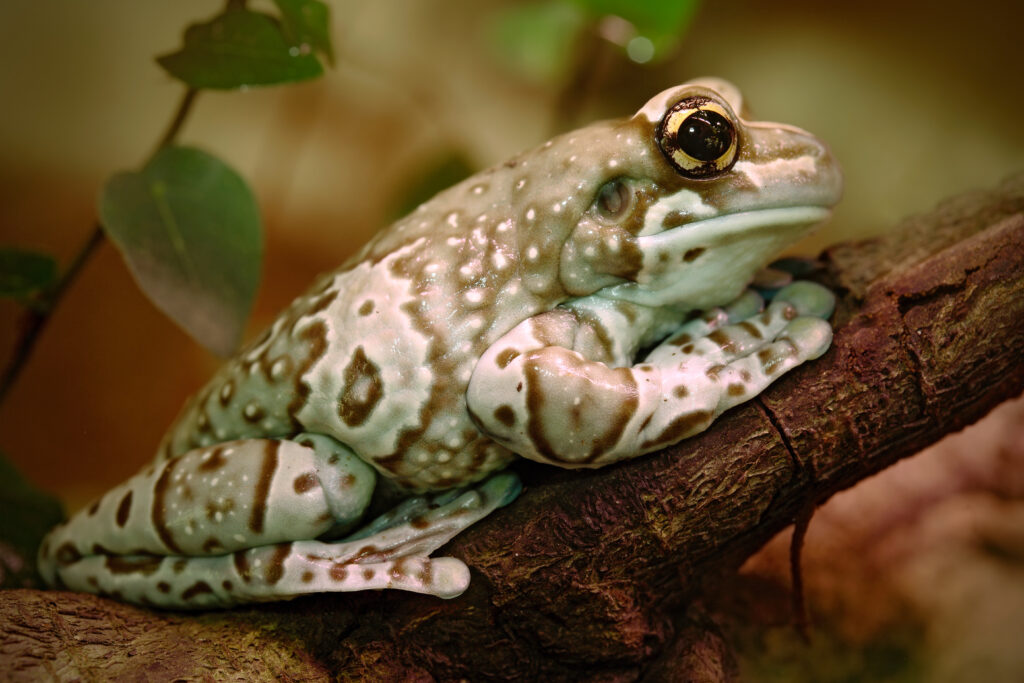Amazon Milk Frog
*This page is under renovation and all information may not be up-to-date or complete*
Description
Amazon milk frogs are a light greenish gray color with patterns of brown or black banding. Juveniles have a stronger contrast between their light and dark bands than adults. Adult Amazon milk frogs also have bumpier skin as they age.
Range & Habitat
Amazon milk frogs are arboreal. Though they rarely leave the trees, they do prefer to stay near slow-moving water. Amazon milk frogs can be found in tropical rainforests in northern South America, including Guyana, Bolivia, Colombia, Brazil, Ecuador, Venezuela, Trinidad, and Peru.
Behavior
Amazon milk frogs are ambush predators. Unlike other frog species that catch prey using their tongue, these frogs use their front limbs to push their ambushed prey into their mouths. These frogs have extra sticky saliva to keep their prey inside their mouth, but this makes it hard for them to swallow. Consequently, this species pushes their eyes into their mouth cavity, which pushes prey down against their tongue. The increased pressure in their mouth liquefies their thick saliva and forces prey down their throat.
This species is most active during dawn and dusk, which is when they can be heard vocalizing. Males vocalize more frequently during the breeding season, which coincides with the rainy season in South America – November through May. Male frogs find a suitable water-filled cavity in a tree or plant where he sits and calls for females. Females lay clutches of up to 2,000 eggs in the water and the males then fertilize. Male frogs will continue to call other females to the water-filled cavity, but he will not fertilize the second female’s eggs. Rather, these unfertilized eggs become food for the first female’s tadpoles. While adult frogs may remain close to the breeding site, they do not provide parental care to their offspring.
Diet
Amazon milk frogs are carnivorous. They eat insects, other invertebrates, or other small amphibians.
Conservation
The greatest threats to Amazon milk frogs are habitat destruction, over harvesting for consumption, and the exotic pet trade. Habitat loss is occurring at rapid rates due to expansion of human settlements, agriculture, and logging.
Fun Facts
- Amazon milk frogs produce a poisonous milky toxin on their skin when they feel threatened. Although this poison is relatively mild compared to other frogs, this can cause a predator to become sick. It also provides a sort of sunscreen for the frog that prevents them from drying out.
- These frogs are also known as “mission golden-eyed tree frogs” for their golden iris color, or boatman frogs “sapo canoeiro”, as their croaks can sound like oars against the side of a canoe.
- Amazon milk frogs have specialized toe pads on their feet that can hold up to 14 times their body weight.

Scientific Name
Trachycephalus resinifictrix
IUCN Conservation Status
Least Concern
Size
Male: 2.5-3 inches long
Female: 3-4 inches long
Life Expectancy
15+ years in the wild, up to 25 in human care